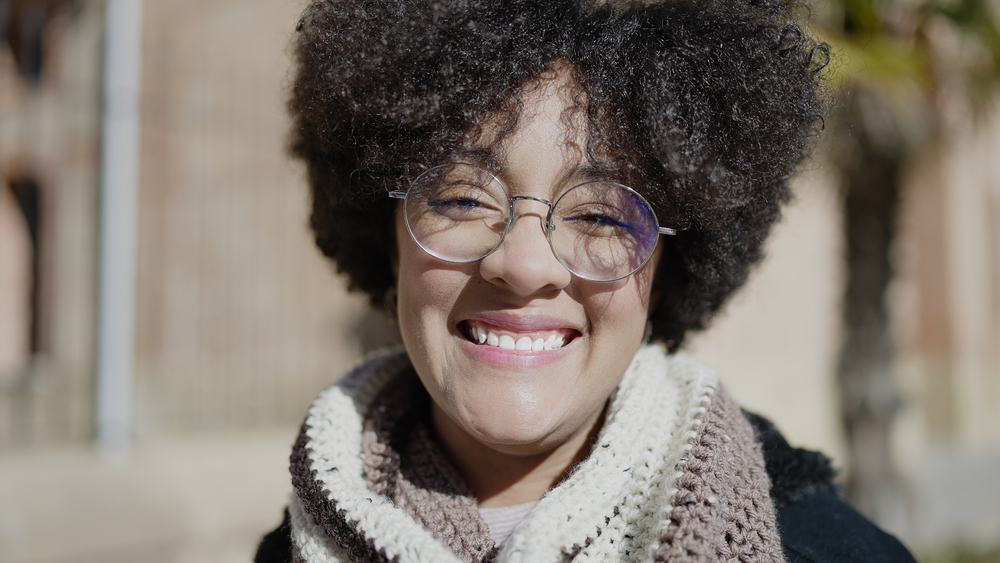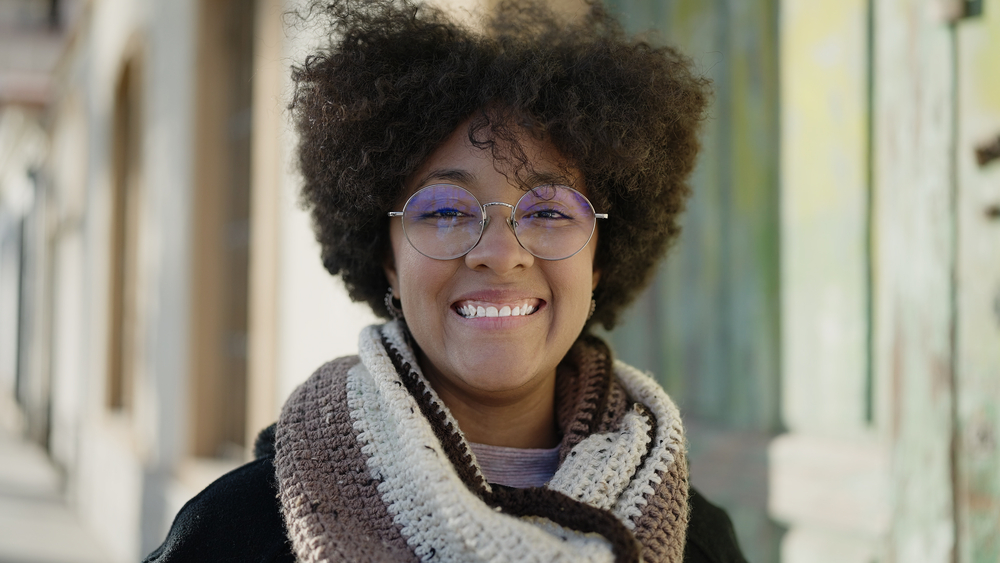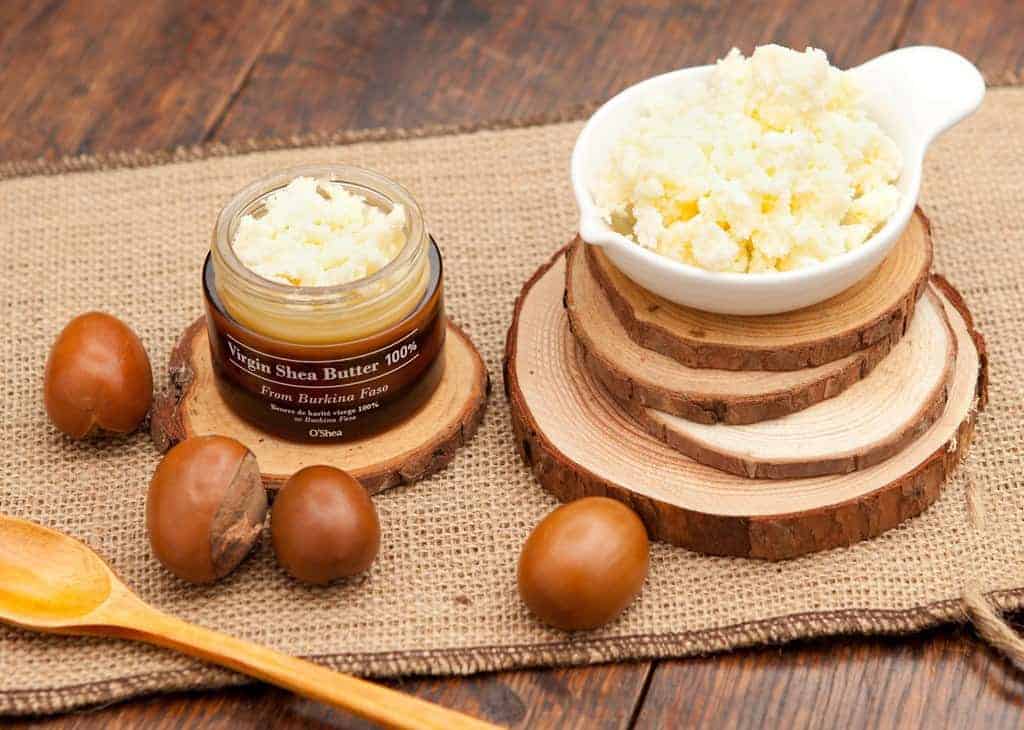
Natural butters have gained considerable popularity, specifically in the natural hair community. It's all because of their incredible restorative and protective benefits for hair.
Shea butter is among the most widely used oils for people with curls, coils, and kinks. If you want to know more about the hair-saving butter, this is the article for you. In it, we will explore its composition, how to use it, and how it can transform and nourish your hair. Let's get right into it!
Table of Contents
Understanding Shea Butter Benefits
Before we dive into the hair-related benefits of shea butter and how to use it, it's essential to understand the basics of the butter. Derived from the nuts of the shea tree, shea butter is a natural emollient rich in vitamins, antioxidants, and fatty acids.
Its composition makes it an exceptional moisturizer and protector for hair. You can find shea butter in various forms, including raw, unrefined, and refined.

Benefits of Shea Butter for Hair
Now that you understand the basics of shea butter, let's dive a little deeper into its benefits. Soon enough, you'll fully understand why shea butter is considered a holy grail component of many hair regimens.
- Moisturizing Properties: Shea butter is a powerful moisturizer that infuses dry hair with much-needed hydration. Its emollient properties create a protective barrier, preventing moisture loss and combating frizz. Shea butter can replenish and nourish your strands, leaving them soft, smooth, and manageable.
- Scalp Health and Hair Growth Promotion: A healthy scalp is the foundation of strong hair - it's a well-known fact. Shea butter has soothing properties that alleviate dryness and itchiness, providing relief to irritated scalps. Additionally, shea butter stimulates your hair follicles, promoting healthy hair growth. It's a dependable ally for anyone seeking longer, thicker hair.
- Protection Against Environmental Damage: Our hair faces daily exposure to harmful environmental factors, like UV rays, heat styling, pollution, and harsh weather conditions. Shea butter forms a protective shield around the hair, guarding it against these damaging elements. By using shea butter, you can minimize the negative impact of external factors and maintain the integrity of your hair. For many, that means longer, stronger, more beautiful hair.

Pros and Cons of Shea Butter for Hair
Though shea butter offers many benefits, it's essential to consider both the pros and cons of the butter before incorporating it into your natural hair routine. Here, we'll get into the good, bad, and ugly.
Pros
- Improvement in hair hydration: Hair dryness is one of the most common hair problems people experience. Thankfully, shea butter is an exceptional moisturizer, and it's deeply nourishing. Despite its seemingly thick composition, it can penetrate the hair shaft and give dry, brittle hair what it needs to bounce back. It also protects against moisture loss to keep your hair moisturized for longer.
- Healthier scalp condition: Shea butter offers soothing relief for dry, itchy scalps, making it a lifesaver for those dealing with scalp conditions like dandruff or eczema. It also promotes a healthy scalp environment by nourishing your hair follicles. With regular use, shea butter also contributes to stronger, healthier hair.
- Less frizz: As you apply shea butter to your hair, you'll notice that your hair instantly smooths out and lies flatter. This applies to all hair types. Shea butter is heavy enough to make a difference on highly textured hair - even 4C.
- Protection from the external elements: When UV rays, heat styling, and pollution threaten to do a number on your hair, shea butter acts as a shield. It provides a lasting layer of protection against these external aggressors, minimizing damage and preserving the integrity of the hair.

Cons
- Flat hair and stiffness: Though shea butter is a boon for those with dry or coarse hair, it can be too heavy for certain hair types. Fine or thin hair can easily become weighed down and appear greasy after shea butter application. In some cases, those with these hair types can get away with using very little shea butter, but it's not always possible. Those with coarse, textured hair can use shea butter without worrying about this issue.
- Buildup risk: Shea butter has a rich consistency and can leave a thick residue on the hair if not properly washed out. This can lead to product buildup over time, resulting in dull-looking hair. It can also reduce the effectiveness of the other hair care products you use. If you decide to use shea butter as part of your hair regimen, we urge you to also use a clarifying shampoo.
- Scalp and skin reactions: Though rare, some individuals may be allergic or sensitive to shea butter. For that reason, we always recommend performing a patch test before applying shea butter to your hair or scalp for the first time. If any adverse reactions occur, such as redness, itching, or irritation, stop using the butter immediately and seek professional help.
- Noticeable scent and texture: Unrefined shea butter has a distinct nutty aroma that may not be your cup of tea. Additionally, its natural texture can be thick and dense, making it challenging to apply and distribute evenly throughout the hair. Many people have no issues with the texture or scent of shea butter, but some do.

How to Use Shea Butter for Hair
Incorporating shea butter into your regimen isn't difficult by any means, and there are several ways to reap its benefits. That's what we'll focus on in this section.
Heat It Up
Regardless of how you plan on using shea butter on your hair, you'll start by melting and softening it to make it easier to apply and distribute. You can do this by placing a small amount in your palms and rubbing them together until it melts.
Want to melt more than a palmful of shea butter? Here are a few ways to do it:
- Double boiler method. This method involves using indirect heat to gently melt the shea butter without exposing it directly to high temperatures.
- Fill a saucepan with water and place it on the stove over medium heat.
- Place a heat-resistant bowl or smaller saucepan on top of the saucepan, creating a double boiler setup.
- Add your desired amount of shea butter to the top bowl or saucepan.
- Stir the shea butter occasionally until it melts completely.
- Once melted, remove the bowl or saucepan from the heat and allow the shea butter to cool slightly before using.
- Microwave method: If you're short on time, the microwave method is much quicker than the previous method.
- Scoop the desired amount of shea butter into a microwave-safe bowl or container.
- Place the bowl in the microwave and heat it in short intervals of 15-30 seconds.
- After each interval, remove the bowl from the microwave and stir the shea butter to distribute the heat evenly.
- Repeat the heating and stirring process until the shea butter is fully melted.
- Be cautious not to overheat the shea butter, as it can quickly become too hot and lose its beneficial properties.
- Warm water bath: This method is suitable for smaller amounts of shea butter and provides a gentle heat source for melting.
- Take a heat-resistant container and fill it with hot tap water.
- Place the container on a stable surface.
- Put the shea butter in a smaller heat-resistant container or zip-lock bag.
- Submerge the smaller container or bag into the hot water bath, ensuring the water level is below the opening to prevent water from entering.
- Allow the shea butter to sit in the warm water bath, periodically checking and stirring until it melts completely.
- Once melted, remove the container or bag from the water bath and dry the outside before opening or transferring the melted shea butter.
Remember, whichever method you choose, it's important to melt the shea butter gently to preserve its beneficial properties.
Avoid exposing it to direct heat or high temperatures, as this can diminish its effectiveness. You don't want it to reach a temperature higher than 175 degrees Fahrenheit.

Apply It
Shea butter can be used in various ways depending on your hair needs. Here are a few ideas:
- Pre-shampoo treatment- Before shampooing and conditioning your hair, apply a moderate amount of melted shea butter from roots to ends. Put on a shower cap and let the butter work its magic for about 1 hour. Then, wash and condition your hair as normal.
- Daily moisturizer and sealant: Take a pea-sized amount of softened shea butter and rub it between your palms. Apply it to the ends of your hair, working your way up to the mid-lengths. Focus on areas prone to dryness and frizz.
- Styling Aid: Mix melted shea butter with your favorite styling products or oils to create a personalized hair butter. The right product combination will provide hold, moisture, and shine while taming flyaways and defining curls. Apply your mix to damp or dry hair and style as desired.
- Scalp Massage: Warm up a small amount of shea butter and use your fingertips to gently massage it into your scalp. Some people will want to wash it out afterward, and that's possible. But you don't have to.
Note: Everyone's hair is unique, so feel free to experiment with the amount of shea butter you use and your application frequency. Pay attention to how your hair responds and adjust accordingly. Remember, a little goes a long way with shea butter, so start with a small amount and add more if needed.
By following these steps, you can make the most of shea butter's nourishing properties and incorporate it seamlessly into your hair care routine.

How to Store Shea Butter
To ensure the longevity and quality of your shea butter for later use, it's important to follow very specific storage instructions. We'll cover every aspect of storage so you can get the most out of your shea butter.
- Pick a cool and dry place: Store your shea butter in a cool and dry place, away from direct sunlight, heat sources, and moisture. Excessive heat and humidity can cause the butter to melt or become rancid, reducing its effectiveness.
- Store it in a sealed container: Transfer your shea butter to an airtight container to prevent air exposure and moisture absorption. Use a clean and dry container made of glass or plastic that has a tight-fitting lid. Ensure the container is free from any residue or moisture that could contaminate the shea butter.
- Dark-colored container: If possible, choose a dark-colored container, such as amber or opaque, to protect the shea butter from light exposure. Light can degrade the quality of the butter and affect its potency over time.
- Avoid contamination: Prevent contamination by using a clean utensil or scooping tool when removing shea butter from the container. Avoid using your fingers directly, as it can introduce bacteria or other contaminants into the butter.
- Store small portions: We urge you to divide your shea butter into smaller portions or cubes if you have a large quantity. This way, you can use it a bit at a time while keeping the rest of the butter sealed and protected. Smaller portions also make it easier to measure and melt as needed.
- Check the butter for rancidity: Shea butter has a long shelf life (up to 3 years), but it's essential to periodically check for signs of rancidity. If you notice an off smell, a change in color, or an unpleasant texture (graininess or oil separation), it may indicate that the shea butter has gone bad and should be discarded.
By following these storage guidelines, you can preserve the quality of your shea butter and ensure it remains fresh and effective for future use.

Dos and Don'ts of Using Shea Butter on Your Hair
Up until this point, you've gathered some useful information on how to use shea butter on your hair. If you follow those instructions in the letter, you're one step closer to reaping the benefits of shea butter.

But if you want to increase your chances of success with shea butter even further, check out the dos and don'ts below:
Dos
- Do a patch test. Before applying shea butter to your hair, perform a patch test on a small area of your skin or scalp to check for any allergic reactions or sensitivities. This is especially important if you have a history of allergies or sensitive skin.
- Use it sparingly on fine, thin hair. Over-applying shea butter is a common mistake people make. Start with a small amount and gradually increase it if needed. Using too much shea butter can weigh down your hair and make it appear greasy.
- Prep the butter by melting and softening it. Shea butter is solid at room temperature. Before use, melt and soften it. Use gentle heat sources like a double boiler or warm water bath to avoid overheating and preserve its beneficial properties.
- Get creative with product mixes. Experiment with mixing shea butter with other oils, essential oils, or natural ingredients to create personalized hair treatments or styling products. Customizing can help address specific hair concerns or enhance the benefits of shea butter.
- Seal in the moisture. Use shea butter as a sealant after moisturizing your hair with other products. Apply a small amount to the ends and mid-lengths of your hair to lock in moisture and combat frizz.
- Remember your scalp: Never forget that shea butter can do wonders for a dry or irritated scalp. Use your fingertips to gently massage melted shea butter into your scalp to promote circulation, nourish the scalp, and stimulate hair growth.
Don'ts
- Don't apply shea butter to dry hair. Shea butter is most effective when applied to damp or wet hair. Applying it to dry hair can make it difficult to distribute. What's more, if your hair isn't already pre-moisturized, the shea butter has no hydration to seal in.
- Don't neglect proper storage. Neglecting proper storage can lead to the deterioration of shea butter's quality and effectiveness.
- Don't ignore allergic reactions: If you experience any discomfort, itching, redness, or irritation after using shea butter, stop using it immediately. Allergic reactions can occur, even if you've used shea butter before, so it's important to listen to your body and seek professional assistance if needed.
By following these dos and don'ts, you can maximize the benefits of shea butter while avoiding any potential pitfalls. Shea butter can be a wonderful addition to your hair care routine when used appropriately and in moderation.
Shea Butter Doesn't Change Hair Overnight
Shea butter has been touted as an overnight hair miracle - it's not true. Though you may see surface-level improvement overnight, it takes time to see substantial changes.
Incorporate shea butter into your routine with patience and consistency, and you'll soon experience the transformative effects it can have on your hair's health and appearance.
Whether you're seeking hydration, growth, or protection, shea butter could be exactly what you need on your natural hair journey. So, there you have it - how to use shea butter for hair. We hope you found all the information you needed, and we wish you the best with your hair.




